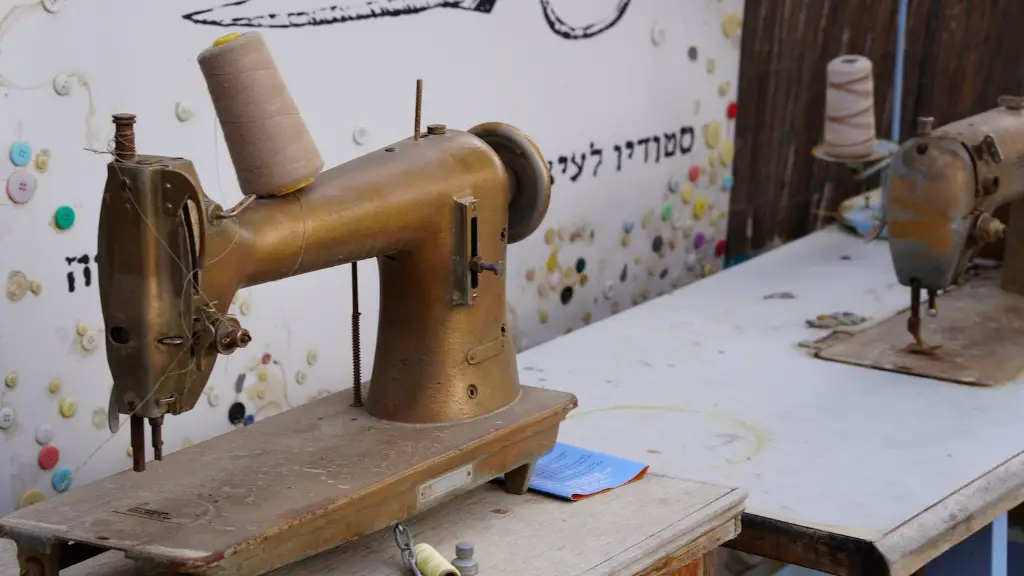Safety
Sewing machines motors can be complex pieces of equipment which require the utmost caution when being worked on. It is important for anyone considering the task of rewiring a sewing machine motor to assess their own individual capabilities and take into account safety precautions. Specialised gear should be used when handling electric parts, including insulated hand gloves and safety goggles. Additionally, it is important to make sure that the motor is unplugged from any power source before it is tampered with.
Gathering Materials and Tools
Before starting to work on the motor, it is important to make sure that all the right materials and tools are gathered. This will depend on the type of motor and the wiring scheme that needs to be done. The sewing machine manual should provide an overview of the type of tools required, and any specialised pieces of equipment needed. Common items that may be needed include electrical insulation tape, wire strippers, wire cutters, and a wire brush. As the motor is being disassembled, it is important to keep notes of which wiring goes where.
Disassembling the Motor
Before anything is done to rewire the motor, it is important to completely remove the covers or case from it. This will allow for the wires and connections to be identified, and any necessary components to be replaced. Once the case has been removed, all the wiring should be carefully separated from the core motor.
Inspecting the Wiring
As the wiring is disconnected from the core motor, it is important to thoroughly inspect it for any damage. This includes any cracking or fraying of the insulation, as well as any strange connections. Additionally, if any wires are damaged, it is important to replace them with new ones of the same type and gauge. This is because the resistance of the wire is important for the efficiency of the motor.
Rewiring the Connections
Once all the necessary components have been gathered and the wiring inspected, it is time to rewire the connections. This should be done with great caution and care, as incorrect wiring can cause the motor to overheat or even stop functioning. The wiring scheme should also be followed closely and double-checked against the diagrams and diagrams provided by the sewing machine’s manual.
Testing the Motor
Once all the wiring has been done and reconnected to the core motor, it is time to test the motor. This should be done by plugging it in and powering it up, keeping in mind all the necessary safety precautions. Any unusual sounds, smells or behaviour should be noted and addressed appropriately. If the motor does not seem to be functioning correctly, it is important to double-check the wiring for any errors or complications.
Securing the Motor
The last step of rewiring a sewing machine motor is to secure it all back together. This includes reattaching all the covers, securing all the wires and electrical components, and making sure the motor is in place and functioning effectively. Once all these steps are complete, the motor should be ready to go.
Removing Corrosion and Grease
Due to the fact that a sewing machine motor may be exposed to wet conditions or fluids, it is important to occasionally remove any corrosion, rust, or grease that may accumulate. This can be done by carefully dismantling the motor and cleaning each part with a wire brush, a damp cloth, and a mild detergent.
Replacing Parts
Depending on the age and condition of the motor, it may be necessary to replace some parts. This could include anything from the motor’s brushes, to its wiring, to its overall outer shell. In such cases, it is important to use original manufacturer’s parts and to make sure that the new parts are compatible with the motor.
Reconnecting the Wires
When all the new parts have been added and the old parts have been removed, it is time to reconnect the wires. To do this, the wiring scheme should be closely followed and all the wires must be secured firmly and securely to their respective terminals. Additionally, insulation tape should be applied to all the underlying wires and connections to protect them from any kind of shock or damage.
Storing the Wires
Finally, the wiring should be stored in a neat and organised way. This will make it easier to identify any parts that need to be replaced or if the wiring needs to be altered at any time. Additionally, all the terminals and connections should be labelled in the event of any future maintenance or repairs.


